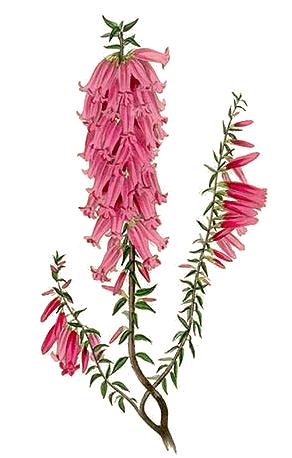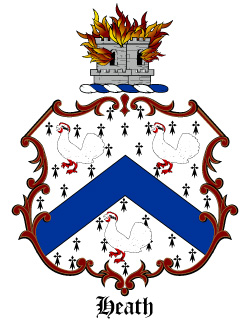A park after my own name
Well sort of...
Driving past this road day in day out, I had never ventured down here until recently. Finding local untouched parks with adequate hide holes is not easy! Fortunately this park gave up its best for this hide.
So whilst we are looking at Heath it might be worth knowing something about Heath.
Heath: 1. n: an area of open uncultivated land, typically on acid sandy soil, with characteristic vegetation of heather, gorse, and coarse grasses.
2. n: a dwarf shrub with small leathery leaves and small pink or purple bell-shaped flowers, characteristic of heaths and moorland.
 The Pink Heath: Epacris impressa
The Pink Heath: Epacris impressa
Representatives of interested Victorian government departments, societies and individuals met on 18 September 1951 and unanimously agreed on Common Heath as the State floral emblem.
The pink form of Common Heath, Epacris impressa, was proclaimed the floral emblem of Victoria on 11 November 1958.
Victoria was the first Australian State to give official recognition to such an emblem.
Common Heath is a slender, upright shrub which grows to about a metre in height. The rigid, alternate leaves are stalkless and fairly narrow. They range from 4 to 16 mm in length and are sharply pointed.
The Heath Family Name
 This famous surname is of Anglo-Saxon and Olde English pre 7th century origins. It is residential, denoting someone who lived at, on, or by, a moor or heath, or it can equally well be a locational surname from any of the numerous places called Heath, in for example, the counties of Derbyshire, Bedfordshire, Herefordshire, Shropshire and Yorkshire. In all case the derivation is from the Olde English word "haeth", and the later Middle English "hethe", meaning heath or heather, the characteristic plant of heathland areas. The name development has included: Laurence atte Hethe of Sussex in 1296; Peter del Heth of Yorkshire in 1296; and Alan Othehethe of Staffordshire in 1332. One Isack Heath, his wife Elizabeth, and daughter, also named Elizabeth, were early emigrants to the New England colonies of America. They left the port of London on the ship "Hopewell" in September 1635. Notable namebearers include: Nicholas Heath (1501 - 1578). He was appointed Archbishop of York in 1555, and Lord Chancellor of England in the following year; whilst Robert Heath (1575 - 1649) was the Solicitor-general in 1621 and knighted in the same year. The first recorded spelling of the family name is shown to be that of John de la Heth. This was dated 1248, when he was a witness in the Court Records of the county of Essex, during the reign of King Henry 111rd of England, 1216 - 1272.
This famous surname is of Anglo-Saxon and Olde English pre 7th century origins. It is residential, denoting someone who lived at, on, or by, a moor or heath, or it can equally well be a locational surname from any of the numerous places called Heath, in for example, the counties of Derbyshire, Bedfordshire, Herefordshire, Shropshire and Yorkshire. In all case the derivation is from the Olde English word "haeth", and the later Middle English "hethe", meaning heath or heather, the characteristic plant of heathland areas. The name development has included: Laurence atte Hethe of Sussex in 1296; Peter del Heth of Yorkshire in 1296; and Alan Othehethe of Staffordshire in 1332. One Isack Heath, his wife Elizabeth, and daughter, also named Elizabeth, were early emigrants to the New England colonies of America. They left the port of London on the ship "Hopewell" in September 1635. Notable namebearers include: Nicholas Heath (1501 - 1578). He was appointed Archbishop of York in 1555, and Lord Chancellor of England in the following year; whilst Robert Heath (1575 - 1649) was the Solicitor-general in 1621 and knighted in the same year. The first recorded spelling of the family name is shown to be that of John de la Heth. This was dated 1248, when he was a witness in the Court Records of the county of Essex, during the reign of King Henry 111rd of England, 1216 - 1272.
Sir Robert above is of the same lineage as the cache owner thusly:
Robert (c1480 - ?)
Johannes (c1510 - ?)
Johannes (c1535 - ?)
Robert (1560 - ?)
Sir Robert (20/5/1575 - 1649)
Edward (1612? - ?)
Richard (1625 - 1717)
Robert (c1655 - ?)
Thomas (c1680 - ?)
Miles Foster (1710 - 1777)
William (1760 - 1840)
Henry (c 1795 - 3q1871 or 1875?) age 75
Alfred (28/11/1828-18/8/1902)
J.P. Henry (24/12/1871-22/12/1931)
Henry Palmerston (14/2/1911- 11/1977)
Roger Palmerston (10/1944-)
Andrew Stephen (9/1972- )
So you can see some interesting things here...
Enough prattle... please enjoy the cache here - enjoy the kids park as well
Oh - and the cache? Well just be subtle and put it back where you got it! Small 200mL Sistema - no pen so please BYO
ENJOY!